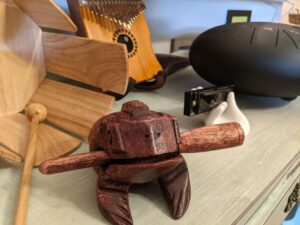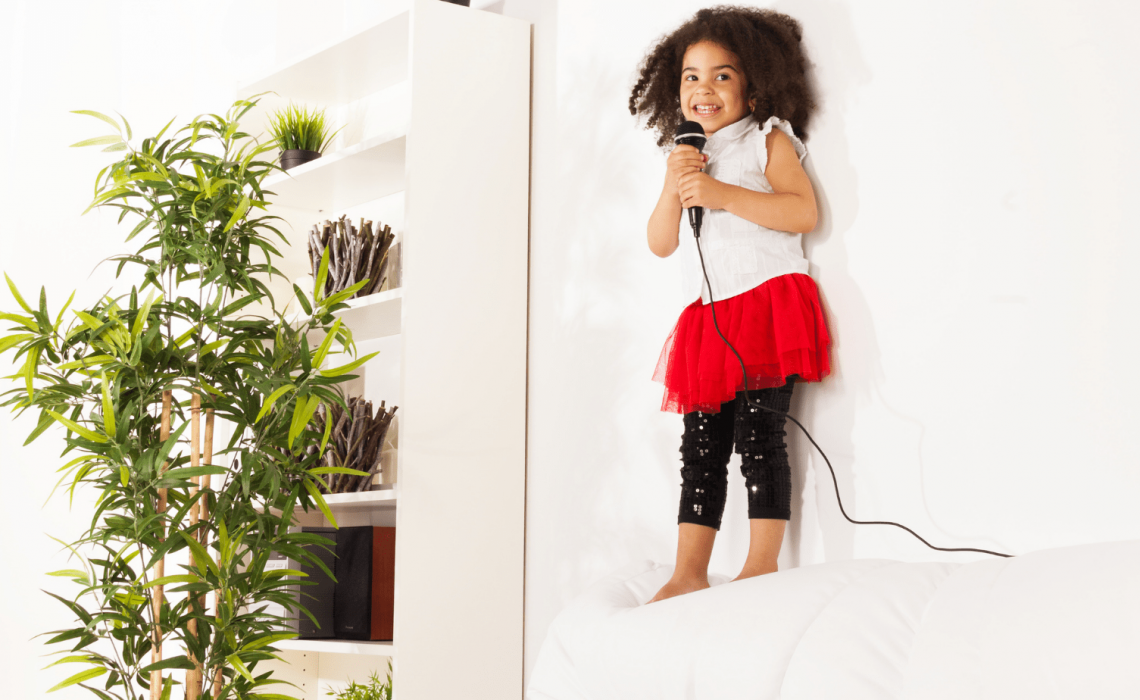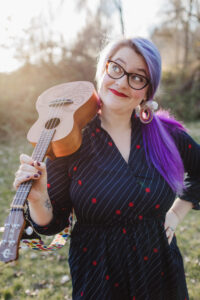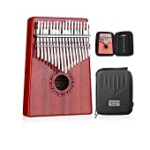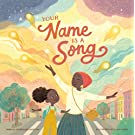What Makes a Great Home Music Studio?
Today, we’ll cover all the elements needed to create a well-balanced home music studio for little kids. Learn how to choose the perfect location, make the space cozy, and what musical instruments to add. We’ll also share ways to encourage music appreciation. Lastly, you’ll learn some final tips for creating long lasting musical joy in your home.
Location Location Location
Just like in the world of real estate, location is also important when setting up your music zone at home. I recommend creating this zone in a prominent part of the house. Do you spend all day in the main living area? Or in a bedroom/office? You’ll want your kids to have easy access to the music zone. This will encourage more time spent interacting with and enjoying music.
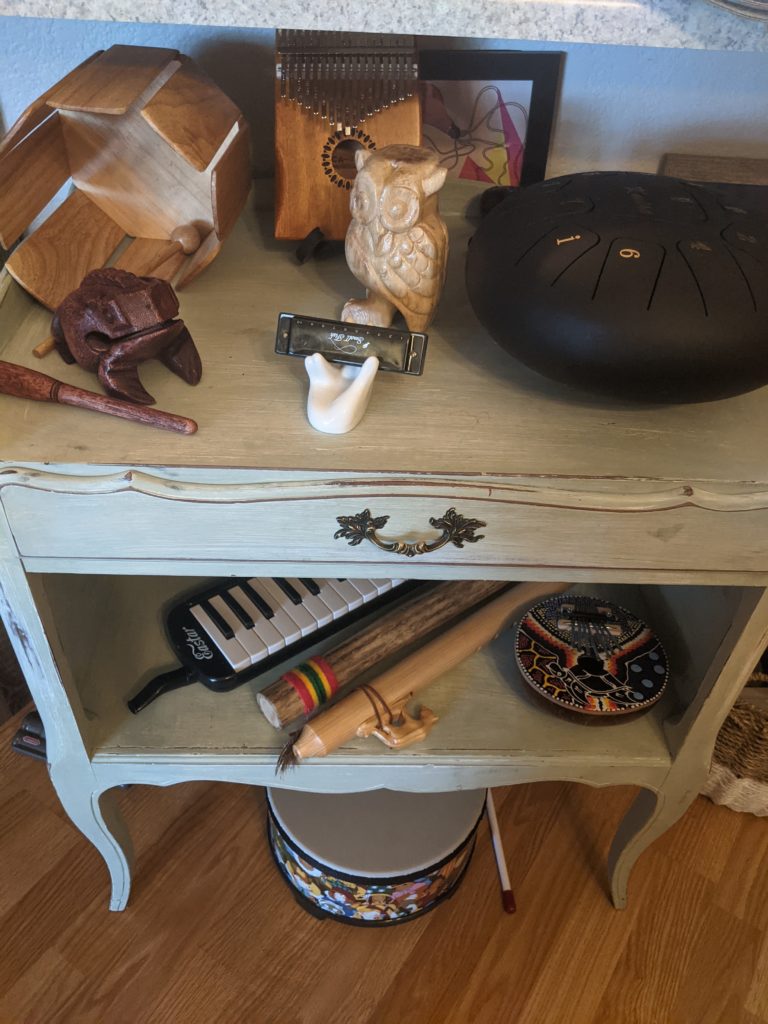
Now, the music zone can be a small corner, a special nook or even just a shelf. You do NOT need a whole separate room just for the music zone (though if you have the space, go for it!). You could even set up two smaller music spots, either in the same room, or on separate floors of the house (especially if you spend your day in two different rooms).
Making Music
Make the space cozy
Once you’ve found the perfect spot for your music studio, then we’ll need to make it comfy and cozy. This will make the space more inviting so that your kids actually want to be there. You could add a small rug (think 2ftx3ft), small trays or baskets for instruments, a plant (fake ones totally count!), or a special lamp.
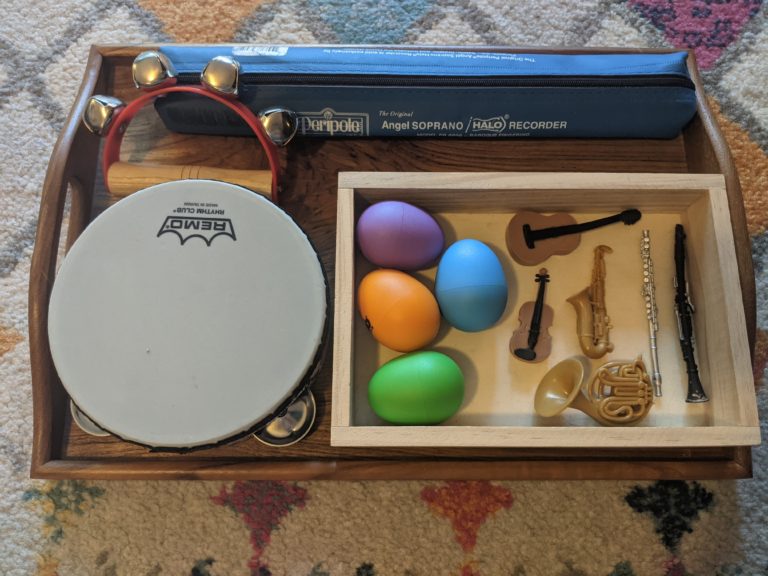
Keep in mind, that how we set up any space in our home, inherently implies how we expect the space to be used. As an example, I prefer to display each instrument on its own, rather than throwing them all in one big basket. Presenting each instrument on its own encourages more care and attention to the instruments.
Musical instruments to include
You’ll want to include a variety of musical instruments in your music studio. For example, I suggest including some rhythmic instruments and some pitched instruments. I also suggest some small sized instruments as well as bigger sized instruments. Still not sure what instruments to choose? Check out my favorite musical instruments for babies, toddlers and beyond.
Additionally, whenever possible, opt for instruments made from natural materials (wood, metal, natural fibers, seeds). Not only will this be more visually appealing to kids (and adults, let’s be real), but also more tactilely appealing as well (more appealing to the physical touch).
Appreciating Music
Listen to music
Another important aspect of your home music studio should be the ability for your child to to listen to and appreciate music, on their own. I recommend including a (cheap) CD player or a radio. There’s also the personal fave in our house, a Yoto Player (The Yoto Player allows kids as young as age 2 the chance to control their own tunes, in a screen-free, ad-free, easily accessible way.)
You may also choose to include headphones for this part of the music zone. (You’ll want reduced volume capacity and wireless headphones for your little one.)
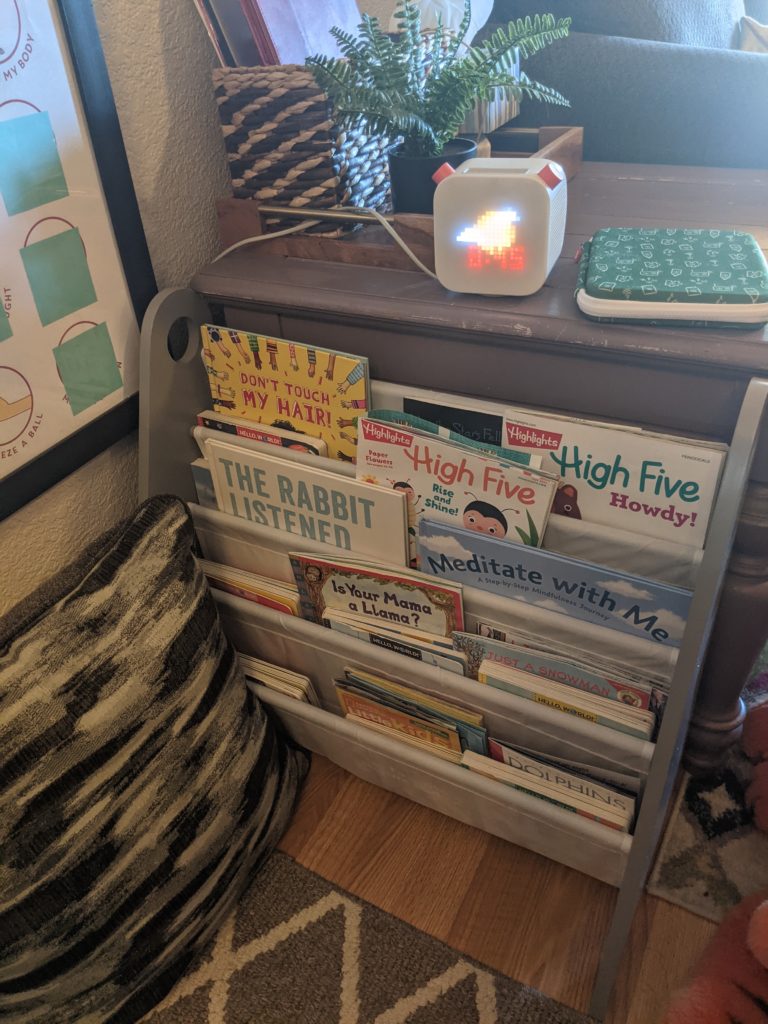
Read musical books
Lastly, I suggest adding at least a few musical books to your music zone. Even if you child can’t officially read yet, they’ll still enjoy paging through favorite books and recalling the story or rhythm of the words. They might even have the book memorized! Check out my favorite musical books here.
In conclusion, make sure you include some ways to appreciate music by way of listening to music and reading musical books.
Final Tips for Long term Success with Your Home Music Studio
Keep the music space fresh
After putting in all that planning and effort for your home music studio, now let’s discuss top tips to make sure the space stays fresh and well loved for the long term.
First, I recommend only setting out 3-6 instruments at a time. This will ensure that your little one doesn’t get overwhelmed.
Next, rotate the instrument selection every few weeks. This will help sustain interest in the music zone, and it’ll seem like brand new instruments to your kids (without spending a dime).
Spark renewed interest
Play with the instruments yourself! This will help reignite interest and intrigue in the instruments again. Typically, adult family members tend to be the most interesting things for young children. This is why your kid follows you around the house and tries to “help” you with every.single.thing. you do.
You can also model unique and different ways to play the instruments, even if it’s not “correct” (exploration is a perfect beginning step, there’s plenty of time for using proper technique later). Still need some help? Check out my blog post all about musical instruments, including creative options for play.
Utilize music vocabulary and technology
Teach the official names for all instruments. This will capitalize on your child’s insatiable thirst for language and vocabulary during these early years of development.
Lastly, I love watching orchestral music videos and pointing out the various instruments as they are featured on the screen. It’s especially fun to point out the same instruments that you have at home, so your child can see “real” people playing “their” instruments.
One last bonus tip: add a pretend microphone to your instrument rotations. Kids love performing and pretending they’re on stage singing to a crowd. Plus, who can resist a giant, colorful microphone?!
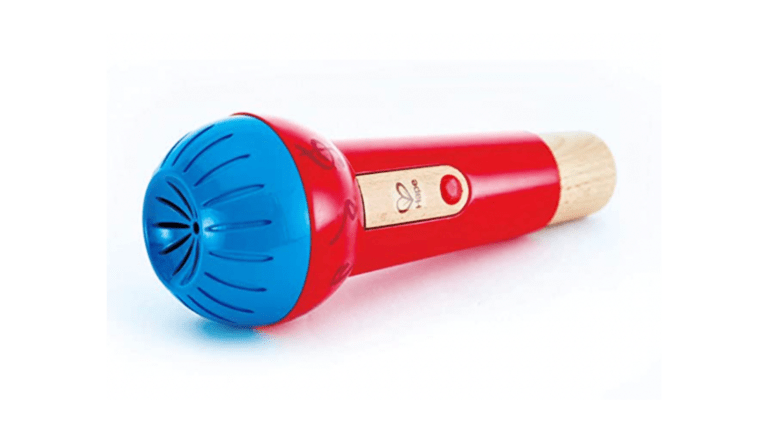
In Summary
Let’s review! Here are the steps we discussed on how to create your own, well balanced, home music studio for little kids.
- Step one, choose the perfect location (somewhere you and your family spend a lot of time).
- Step two, make the space cozy and inviting, to ensure long visits to the music station. Remember to create the zone in a way that reflects the intended use of the space and items.
- Step three, add a small selection of various types of instruments, made from natural materials.
- Step four, include some way to listen and enjoy music (orchestral, instrumental, singalong songs, etc), as well as some musical books.
- Step five, remember to keep the music space fresh! Rotate different instruments every few weeks, display instruments of various shapes and sizes, play with the instruments yourself to reignite interest, teach correct instrument names, and watch orchestral music videos together (especially ones that show similar instruments to the ones you have at home).
I wish you many moons of marveling in the many charms and delights of having your own music home studio.
Your Turn!
Tell us in the comments below, what’s one small step you can take right now towards creating YOUR home music zone? Rome wasn’t built in a day, and your music zone will probably take some time to refine, too. Just get the ball rolling and start small!
You May Also Like


Top 30 Delightful, Musical Books That Every Kid Should Read
